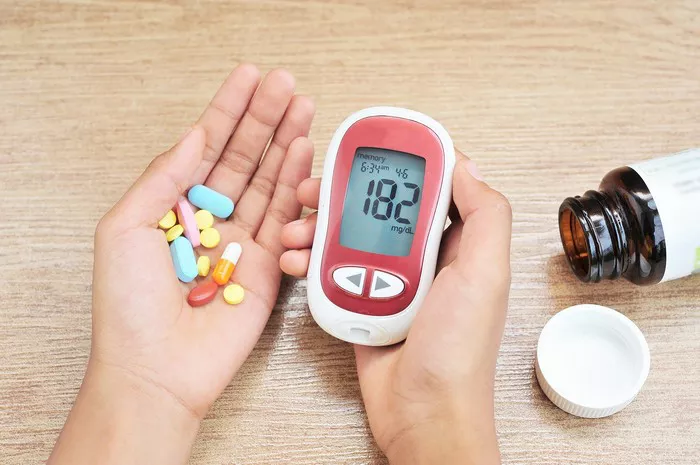Insulin resistance is a condition where the body’s cells become less responsive to insulin, a hormone that regulates blood sugar levels. This can lead to higher blood sugar levels and, if left untreated, can progress to type 2 diabetes and other metabolic disorders. Healing from insulin resistance involves lifestyle changes, dietary modifications, and, in some cases, medication. This article will explore practical strategies to heal from insulin resistance, promoting overall health and well-being.
Understanding Insulin Resistance
What Is Insulin Resistance?
Insulin resistance occurs when the body’s cells do not respond effectively to insulin. Insulin is produced by the pancreas and allows cells to absorb glucose from the bloodstream for energy. When cells become resistant, more insulin is needed to help glucose enter the cells. This can lead to higher insulin levels in the blood, resulting in various health issues.
Causes of Insulin Resistance
Several factors can contribute to the development of insulin resistance, including:
Genetics: Family history of diabetes can increase the risk.
Obesity: Excess body fat, particularly around the abdomen, is a significant risk factor.
Physical Inactivity: A sedentary lifestyle can contribute to insulin resistance.
Poor Diet: Diets high in refined carbohydrates, sugars, and unhealthy fats can lead to insulin resistance.
Hormonal Changes: Conditions such as polycystic ovary syndrome (PCOS) can affect insulin sensitivity.
Chronic Stress: Prolonged stress can increase cortisol levels, affecting insulin sensitivity.
Symptoms of Insulin Resistance
Many individuals with insulin resistance do not exhibit noticeable symptoms. However, some potential signs include:
- Increased hunger
- Fatigue
- Difficulty concentrating
- Unexplained weight gain
- High blood sugar levels
- Dark patches of skin, especially in areas like the neck or armpits (known as acanthosis nigricans)
Importance of Addressing Insulin Resistance
Addressing insulin resistance is crucial for preventing the progression to type 2 diabetes and reducing the risk of related health complications, including heart disease, stroke, and metabolic syndrome. Early intervention can significantly improve health outcomes and enhance quality of life.
Steps to Heal from Insulin Resistance
Healing from insulin resistance requires a multifaceted approach. Here are several strategies to consider:
1. Adopting a Balanced Diet
A balanced diet is vital for managing insulin resistance. Here are key dietary principles to follow:
Focus on Whole Foods
Fruits and Vegetables: Aim for a variety of colorful fruits and vegetables, which provide essential vitamins, minerals, and antioxidants. These foods are typically low in calories and high in fiber, helping to regulate blood sugar levels.
Whole Grains: Choose whole grains over refined grains. Options like brown rice, quinoa, whole grain bread, and oats provide more fiber and nutrients, promoting better blood sugar control.
Lean Proteins: Incorporate lean protein sources such as chicken, turkey, fish, beans, legumes, and tofu. Protein helps to stabilize blood sugar levels and keeps you feeling full.
Healthy Fats: Include sources of healthy fats, such as avocados, nuts, seeds, and olive oil. These fats can improve insulin sensitivity and support overall health.
Limit Processed Foods
Refined Carbohydrates: Reduce intake of refined carbohydrates, including white bread, pastries, and sugary cereals. These foods can cause rapid spikes in blood sugar levels.
Sugary Beverages: Avoid sugary drinks, including soda, energy drinks, and sweetened teas. Opt for water, herbal teas, or unsweetened beverages instead.
Trans Fats: Limit consumption of trans fats found in fried foods, processed snacks, and margarine. Choose healthier fats, such as olive oil or coconut oil.
2. Portion Control
Controlling portion sizes can help regulate calorie intake and promote weight loss, which is beneficial for improving insulin sensitivity. Here are some strategies:
Use Smaller Plates: Using smaller plates can help control portion sizes and prevent overeating.
Mindful Eating: Pay attention to hunger and fullness cues. Eating slowly and savoring each bite can help prevent overeating.
Plan Meals: Preparing meals in advance can help ensure that portion sizes are appropriate and that you have healthy options readily available.
3. Regular Physical Activity
Physical activity is crucial for improving insulin sensitivity. Aim for a combination of aerobic and resistance training exercises.
Aerobic Exercise
Types of Exercise: Engage in activities like walking, jogging, swimming, or cycling. Aim for at least 150 minutes of moderate-intensity aerobic exercise per week.
Consistency: Regular aerobic exercise helps improve blood flow and can lower blood sugar levels, enhancing insulin sensitivity.
Strength Training
Building Muscle: Incorporate strength training exercises, such as weight lifting, bodyweight exercises, or resistance bands, at least two days a week.
Benefits: Building muscle mass increases the body’s ability to use insulin effectively and can improve metabolic health.
4. Weight Management
Achieving and maintaining a healthy weight is essential for reversing insulin resistance. Here are some tips:
Set Realistic Goals: Aim for gradual weight loss of 1-2 pounds per week, which is sustainable and healthy.
Track Progress: Keep a record of food intake and physical activity to monitor progress and make necessary adjustments.
Seek Support: Consider working with a healthcare provider, registered dietitian, or a weight loss program to develop a personalized plan.
5. Stress Management
Chronic stress can negatively impact insulin sensitivity. Here are some strategies to manage stress effectively:
Mindfulness and Meditation: Practicing mindfulness, meditation, or deep breathing exercises can help reduce stress levels.
Regular Relaxation: Incorporate relaxation techniques such as yoga, tai chi, or gentle stretching into your routine.
Adequate Sleep: Aim for 7-9 hours of quality sleep per night, as poor sleep can contribute to insulin resistance.
6. Monitoring Blood Sugar Levels
Regular monitoring of blood sugar levels can help you understand how your body responds to various foods and activities. Here are some tips:
Home Monitoring: If you have diabetes or are at risk, consider using a blood glucose meter to track your levels regularly.
Record Keeping: Keep a log of your blood sugar readings, noting any patterns related to diet, exercise, and stress levels.
Consult a Healthcare Provider: Work with a healthcare provider to interpret your readings and adjust your management plan accordingly.
7. Medications and Supplements
In some cases, medication may be necessary to help manage insulin resistance. Here are some options:
Metformin: This medication is often prescribed to help lower blood sugar levels and improve insulin sensitivity.
Other Medications: Other medications may be prescribed based on individual needs and health status. Always consult with a healthcare provider before starting any new medications or supplements.
Supplements
Certain supplements may help improve insulin sensitivity. However, consult a healthcare provider before taking any supplements:
Alpha-Lipoic Acid: This antioxidant may help improve insulin sensitivity and reduce blood sugar levels.
Omega-3 Fatty Acids: Found in fish oil, omega-3s may support heart health and improve insulin sensitivity.
Vitamin D: Adequate vitamin D levels may help improve insulin sensitivity, so consider testing your levels and discussing supplementation with a healthcare provider.
Building a Support System
Having a strong support system can make the journey toward healing from insulin resistance more manageable. Here are some suggestions:
1. Join Support Groups
Consider joining support groups for individuals with insulin resistance or diabetes. These groups can provide valuable resources, encouragement, and shared experiences.
2. Involve Family and Friends
Involve family and friends in your journey toward better health. Share your goals with them so they can provide support and encouragement.
3. Work with Healthcare Professionals
Engage with healthcare professionals, including doctors, registered dietitians, and fitness trainers. They can provide personalized guidance and support throughout your journey.
Long-Term Lifestyle Changes
Healing from insulin resistance requires commitment to long-term lifestyle changes. Here are some strategies for maintaining progress:
1. Set Realistic Goals
Set achievable, specific goals related to diet, exercise, and weight management. Break larger goals into smaller, manageable steps.
2. Stay Informed
Stay educated about insulin resistance, healthy eating, and physical activity. Knowledge empowers you to make informed choices.
3. Celebrate Successes
Acknowledge and celebrate your achievements, no matter how small. Positive reinforcement can motivate you to continue making healthy choices.
4. Be Patient
Healing from insulin resistance is a gradual process. Be patient with yourself and recognize that setbacks may occur. Focus on progress rather than perfection.
5. Regular Check-Ups
Schedule regular check-ups with your healthcare provider to monitor your progress and make necessary adjustments to your management plan.
See also: How Insulin Resistance Works
Conclusion
Healing from insulin resistance is a journey that involves making informed lifestyle choices, adopting a balanced diet, engaging in regular physical activity, managing stress, and monitoring health. By taking proactive steps to address insulin resistance, individuals can significantly improve their health and reduce the risk of developing type 2 diabetes and other related conditions. It is crucial to consult with healthcare professionals to develop a personalized plan tailored to individual needs and circumstances. With dedication and commitment, healing from insulin resistance is not only possible but can lead to a healthier, more vibrant life.
Related topics:
Is Diabetes and Insulin Resistance the Same Thing?



























